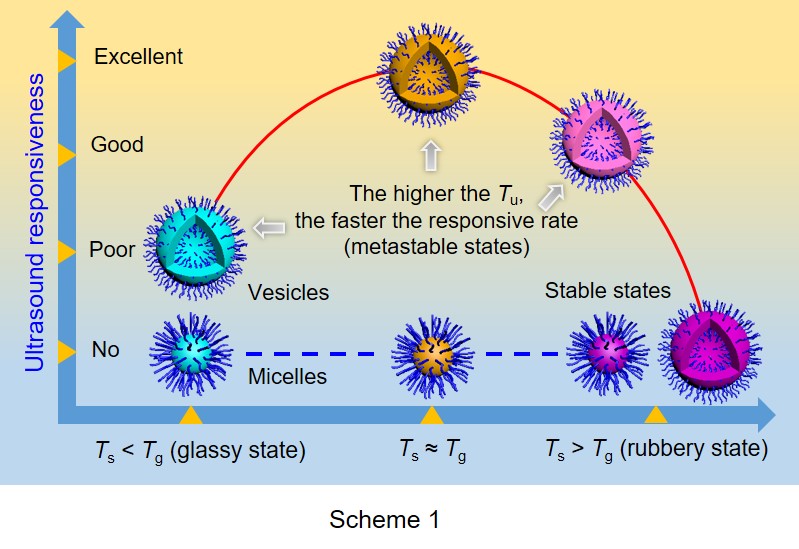On the origin and regulation of ultrasound responsiveness of block copolymer nanoparticles
作者:Yang, Bo.; Du, J. Z.* 时间:2019-09-12 点击数:

Abstract:
Noninvasive ultrasound is more convenient and easily accessible for controlled drug delivery of polymeric nanoparticles than many other stimuli. However, controlled ultrasound responsiveness is rather challenging as the mechanism is still unclear. In this paper, we disclose the origin and the key regulating factors of ultrasound responsiveness of block copolymer nanoparticles such as simple vesicles, framboidal vesicles, lamellae, beads-like micelles and complex micelles that are self-assembled from a range of poly(ethylene oxide)-b-polymethacrylates based model copolymers. We discover that the intrinsic ultrasound responsiveness of block copolymer nanoparticles thermodynamically originates from their metastable state, and its expression kinetically relates to the mobility of the hydrophobic segments of block copolymers. Specifically, the self-assembly temperature (Ts) that has been usually considered as a less important factor in most of macromolecular self-assembly systems, and the solvents for the self-assembly are two dominant regulating factors of the ultrasound responsiveness because they determine the thermodynamic state (metastable or stable) of nanoparticles. For example, simple vesicles with good or excellent ultrasound responsiveness can be prepared in THF/water when the Ts is around or slightly below the glass transition temperature (Tg) of the hydrophobic segment of the block copolymer because the combination of this solvent with this Ts facilitates the formation of metastable vesicles. By contrast, thermodynamically stable solid nanoparticles such as spherical micelles and lamellae (mainly formed in DMF/water) are not sensitive to ultrasound at all, neither are the vesicles in THF/water at stable states when the Ts is highly above Tg. In addition, we unravel that the responsive rate is highly dependent on the sonication temperature (Tu), e.g., the higher the Tu, the faster the rate. Overall, the above important findings provide us with a fresh insight into how to design ultrasound-responsive nanoparticles and may open new avenues for synthesizing translational noninvasively responsive drug carriers.
文章链接:
SCIENCE CHINA Chemistry
2019, DOI: 10.1007/s11426-019-9612-8.